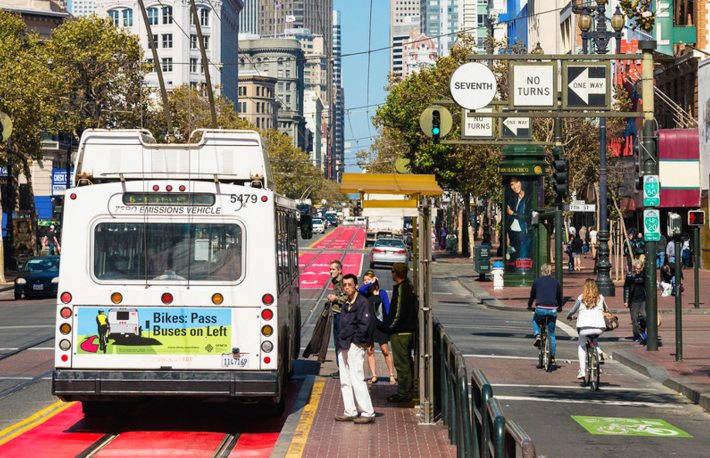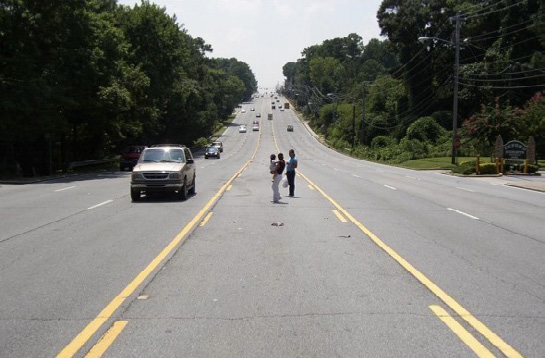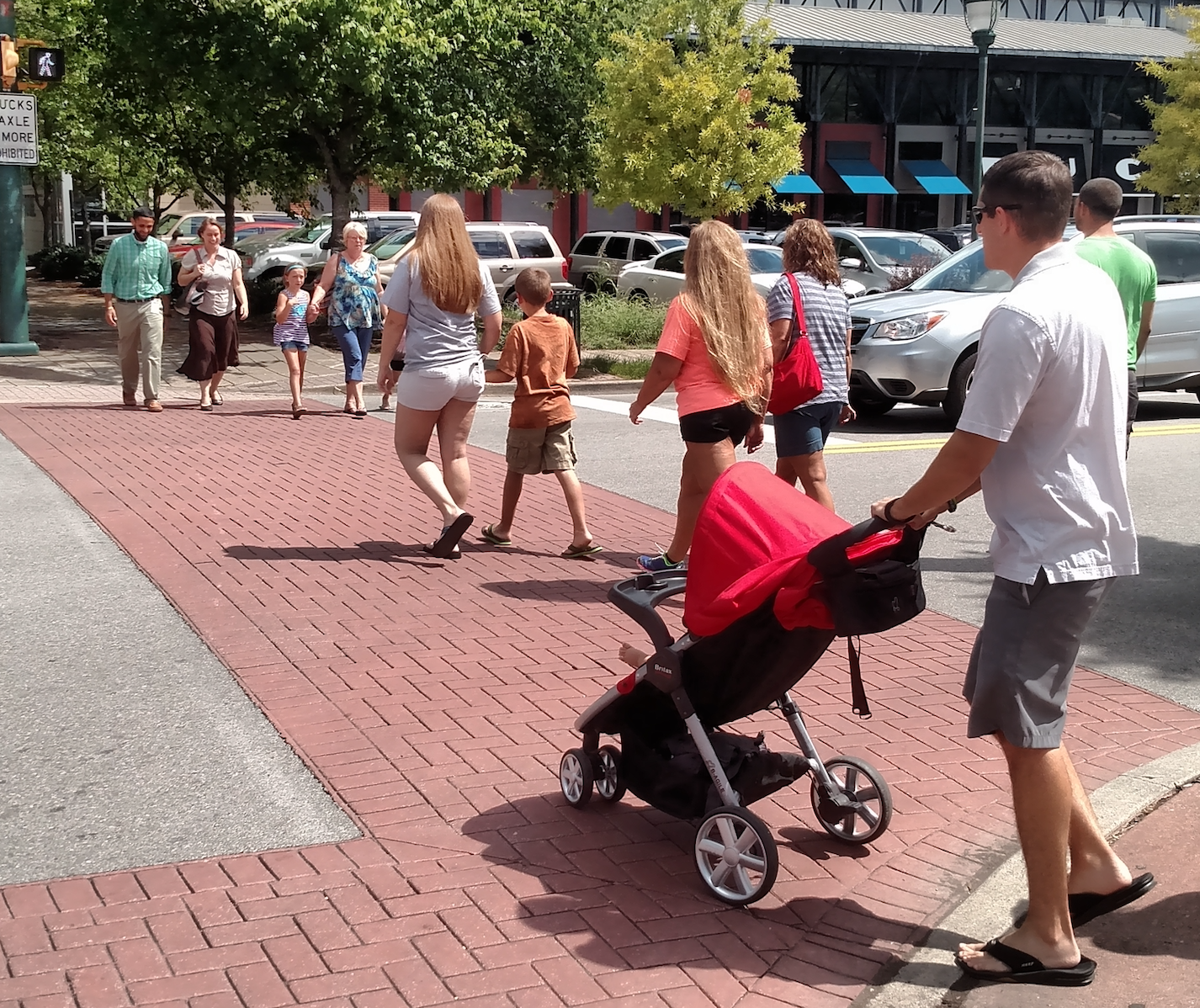Editor's note: this article is an excerpt from the Vision Zero Cities Journal and is republished with permission. For more information on the Vision Zero Cities 2024 conference, click here.
For better — or more often, for worse — a single federal document dictates what nearly every American street looks like. Since 1935, the Manual on Uniform Traffic Control Devices (MUTCD) has governed all road markings, speed limits, stop signs, and traffic signals nationwide. With infrequent updates and nominal changes over the decades, the document has played an out-sized role in the unsafe design of our streets. Every day, people across the US suffer the consequences of an MUTCD that hasn’t prioritized safety for all.
The United States is in the midst of a traffic safety crisis. More than 40,000 people die on American roads each year, far more than in other industrialized countries. Pedestrian deaths are at a forty-year high, and the costs are not borne equally: Black Americans are struck and killed by drivers at a significantly higher rate than white Americans.
While all levels of government bear responsibility, the crisis stems in no small part from the federal standards used to build unsafe streets. The MUTCD prioritizes moving private vehicles at maximum efficiency and speed above all other goals, including safety, sustainability, and access for people walking, biking, in a wheelchair, or on a bus.
In December 2023, the Federal Highway Administration (FHWA) published the 11th Edition of the MUTCD, the first update in almost fifteen years. The new edition makes important steps toward a safer, more people-focused transportation system but fails to include many necessary reforms that would create comprehensively safe streets.

Positive changes include:
Modernizing the method for setting speed zones: The document’s latest edition encourages using traffic-calming and street designs to prevent speeding and adds a context-sensitive approach to speed-limit-setting that accounts for streets’ adjacent land use, pedestrian and bicyclist needs, and crash history. This is a significant change from its previous outdated “85th percentile” method, which sets speed limits based on drivers’ chosen speeds instead of an engineer’s professional understanding of safety.
Making it easier to install crosswalks: The updated MUTCD makes installing and improving crosswalk markings easier and aligns them with guidance and best practices. The new process now reflects the recent guidance on selecting crosswalk markings. If the street is too fast, busy, or wide for a marked crosswalk alone, the MUTCD supports slowing or narrowing the street, or raising the crosswalk, which cities previously needed to ask for special federal approval to implement.
Explicitly allowing the use of green bike lanes, red transit lanes, and asphalt art: The MUTCD now gives broad leeway to use pavement marking colors, removing many unnecessary restrictions in previous guide versions, such as green-painted bike lanes, and red transit lanes. Asphalt art is also now explicitly allowed under the MUTCD, a significant change from the previous edition. Art is not a traffic control device and can be used both in the roadway (such as in an intersection) and outside (like in a paint-and-post curb extension or on the sidewalk). This change reflects local policies and standards developed in partnership with the disability community.

However, despite these significant improvements, the MUTCD still falls short in critical areas that play an outsized role in the unsafe design of our streets.
Crucially, the structure of the document falls short of addressing the needs of the enormous range of urban street users. It unrealistically expects pedestrians and bicyclists to always act “alertly and attentively,” “reasonably and prudently,” and “in a lawful manner.” This definition fails to recognize the inevitability of human error and the enormous range of urban street users. Most children, for example, would not meet this standard. Currently, the MUTCD implies engineers are only responsible for protecting road users who meet this impractical definition — out of step with the principles of Vision Zero and the Safe Systems Approach, which USDOT has explicitly endorsed.
Pedestrian safety in the MUTCD needs to be more adequately addressed. To justify installing pedestrian signals, the MUTCD still requires a very high volume of people to be crossing an unprotected intersection — or that transportation officials wait for multiple traffic injuries or deaths to occur. Motor vehicle signals, meanwhile, are routinely installed simply based on traffic projections from a new development. Pedestrian warrant volumes in the United States are much higher than in other industrialized countries with far lower traffic fatalities, such as Canada.

It adds language for autonomous vehicles without understanding real-world impacts on cities. The updated MUTCD includes a new section on autonomous vehicles that normalizes nascent driverless technology without understanding its consequences. The new language exacerbates concerns that city streets will be designed for autonomous vehicles instead of requiring the cars to be designed to operate safely on already-existing streets.
Eliminate geometric restrictions for urban bikeways and refer to best practices already successfully used in cities. The MUTCD is not intended to provide geometric design guidance. Still, it includes dozens of recommendations about geometric design details for bicycling, which overrides local context and engineering judgment.
Where do we go from here?
The MUTCD was initially a document to standardize signage on rural roads but has evolved, awkwardly, to govern every street in the nation. Every day, people in our cities, suburbs, and towns suffer the consequences. Urban streets serve a variety of functions and many users. The uniformity and rigidity of the MUTCD are valuable on high-speed highways and for standardizing critical features like stop signs and uniform traffic lights but are challenging in the complex, vibrant contexts of city streets.
We must continue working to promote the changes that bring federal policy more in line with USDOT Safe System goals. In 2024, NACTO is working to track and advocate for state adoption of the MUTCD within the required two years, and to change the update process to be more inclusive, transparent, and better reflect the needs of cities. Over 25,000 comments were submitted to the Federal Register during this once-in-a-decade opportunity to ask FHWA to make critical changes to the MUTCD. This enormous volume of comments (a more than ten-fold increase from the last update) demonstrates the degree to which Americans want change.
The Infrastructure Investment and Jobs Act of 2021, also known as the Bipartisan Infrastructure Law, now mandates that the MUTCD be updated every four years. Prior to this change, there was no timeline for regular updates, and almost fifteen years passed between the 10th Edition published in 2009 and the 11th Edition. FHWA will have until December 2027 for the next update. There is hope that the energy and feedback from cities and advocates demonstrated the need for a more inclusive and transparent process for future updates.
Our streets are unsafe because of how they are designed. To save lives, we must remove institutional roadblocks that limit cities’ ability to implement better urban street design quickly. Together, we can advocate for the creation of national standards that proactively support or normalize pedestrian safety treatments, all-ages-and-abilities bikeways, transit priority treatments, and complete streets. The MUTCD can be our biggest hurdle or our greatest asset.






